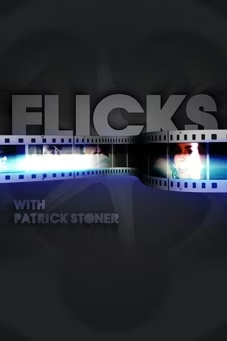
Dignidad Rebelde: Art is Protest
Special | 5m 16sVideo has Closed Captions
Dignidad Rebelde uses design to amplify the stories of people of color.
Melanie Cervantes and Jesus Barraza are the duo behind Dignidad Rebelde, a graphic arts collaboration that uses design to amplify the stories of people of color. They aspire to put art back into the hands of people. Taking inspiration from the work of Emory Douglas, they seek to use their art as a platform for social justice.
Problems playing video? | Closed Captioning Feedback
Problems playing video? | Closed Captioning Feedback
Artbound is a local public television program presented by PBS SoCal

Dignidad Rebelde: Art is Protest
Special | 5m 16sVideo has Closed Captions
Melanie Cervantes and Jesus Barraza are the duo behind Dignidad Rebelde, a graphic arts collaboration that uses design to amplify the stories of people of color. They aspire to put art back into the hands of people. Taking inspiration from the work of Emory Douglas, they seek to use their art as a platform for social justice.
Problems playing video? | Closed Captioning Feedback
How to Watch Artbound
Artbound is available to stream on pbs.org and the free PBS App, available on iPhone, Apple TV, Android TV, Android smartphones, Amazon Fire TV, Amazon Fire Tablet, Roku, Samsung Smart TV, and Vizio.
Providing Support for PBS.org
Learn Moreabout PBS online sponsorship[MUSIC] -I'm Melanie Cervantes.
-I'm Jesus Barraza, and together, we're Dignidad Rebelde.
In English, that's Rebel Dignity.
[MUSIC] -We started in 2007, originally as a website.
We started making art together.
We started teaching each other, and together, we started working with community organizations, making art to support them, making art that empowers our community, making prints, making posters.
It's really about collaborating with our community to make art and make sure these ideas that are put out there are positive and empowering.
[MUSIC] -This poster was really inspired by the ever-increasing practice of separating young people from their parents when they're undocumented.
It was inspired by Emory Douglas and his ability to show community members as empowered agents of change, and the heroes of their own story.
We were able to print 250 of these, as a community, as a collaborative effort, and then use those fundraise to produce 13,000 copies and distribute them throughout the country.
-When I think about designers that inspire me, I think the most effective artists are those who are deeply connected to the movements that they're serving.
Looking at an example of how Melanie and Jesus will not only design a poster about an issue like Stop Urban Shield, but they'll literally bring their screenprints set up to the streets and print the posters with the folks that are there.
-The way I think about it is each little poster is just another stone being thrown at that wall that eventually we're going to take down.
Art is part of it.
Organizing is part of it.
They go hand in hand for me.
-For me, I really wanted to show the communities that we're doing work for our communities in the light of being empowered and actually fighting back, and in our dignity.
-Projects that involve community empowerment, where tools for design are shared, and where the people who are most impacted by the issues that we're working on have had a sense of empowerment and agency in creating those messages for themselves.
That's just such a beautiful thing to see, and a reminder of what the role of culture workers is in our movements.
-This tradition of making multiple goes so far back.
It's such ingenuity.
I love that about this medium.
That there's so many ways that you can get to the multiple, because that's really why we do it.
You know, why wouldn't you use every tool available to you for your liberation?
-Bringing it all together, for me, is the exciting part.
It's like, "How do we bring all of these pieces, do our drawings, using these digital tools that now we've been using for like 20 years?"
With our work, we're always going back and forth between the hand done and the digital.
-Screen printed posters are still very relevant to the movement today, but the technologies have continued to evolve to the digital platforms and social media.
Making sure that we're aware of who we're speaking to and how they best receive information is what drives the kind of medium that we will be producing for.
-We're a part of this continuous history.
We're still trying to tell our stories, and we're still trying to shape our world for the better.
Printmaking is one element of how we do that.
We're communicating in a way that gets to the heart of a person, and still there's so much more that needs to change.
I think design will be an important element in helping to envision that.
[MUSIC] -This program was made possible in part by City of Los Angeles, Department of Cultural Affairs, LA County Department of Arts and Culture, and the California Arts Council.
[MUSIC]
Support for PBS provided by:
Artbound is a local public television program presented by PBS SoCal















